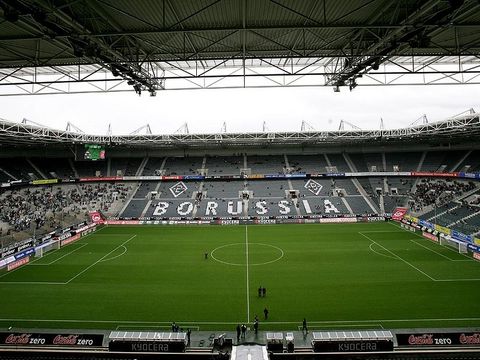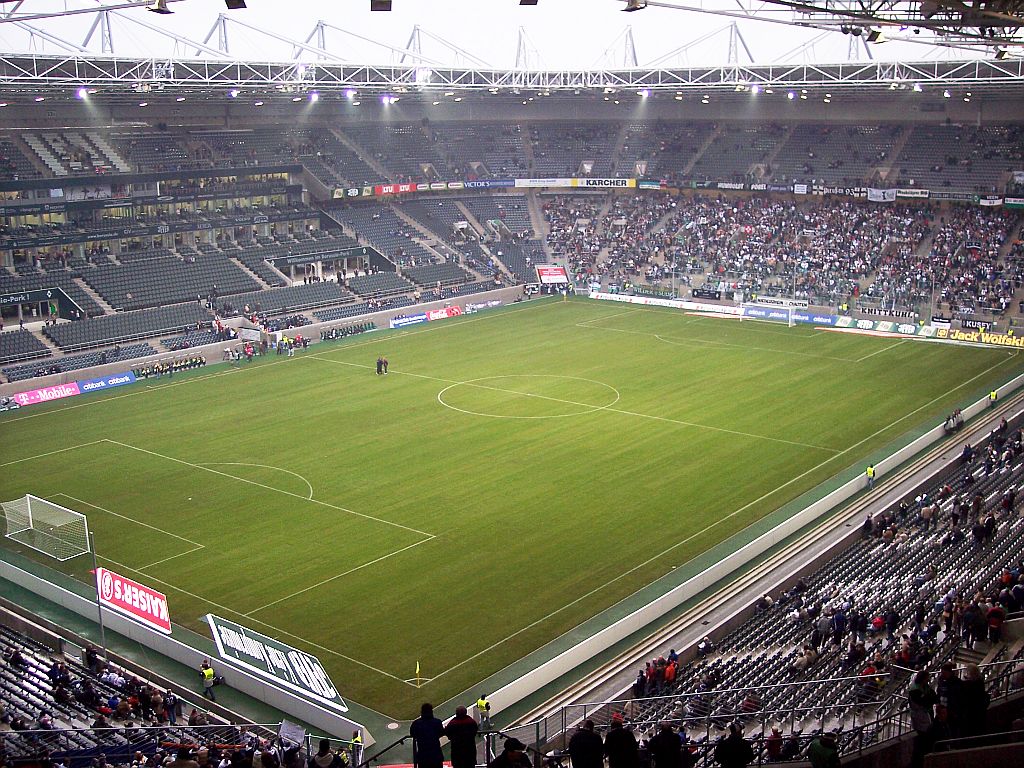Population: 265 000
Area: 170 km2
Rivers: Gladbach, Niers, Schwalm
Location: 51° 12' N 06° 26' E

History
Monchengladbach, located west of the Rhine between Dusseldorf and the Dutch town of Roermond, only assumed its current boundaries on 1 January 1975 after local government reforms. The reorganisation merged the communities of Monchengladbach, Rheydt and Wickrath into one administrative unit, the former being the biggest of the three with just short of 140,000 inhabitants.
The first settlements in the Monchengladbach area date back approximately 300,000-400,000 years. Numerous cairns from the Neolithic and the Bronze Age still exist today. The history of Monchengladbach began with the construction of Gladbach Cathedral and the founding of an abbey in the year 974 by Gero, Archbishop of Cologne, and the monk Sandrad of Trier.
French revolutionary troops marched into the town in October 1794. From 1798 until 1814, the Mairie Gladbach was annexed to the French Département de la Roer, before becoming part of the Kingdom of Prussia in 1815.

The name Monchengladbach has undergone any number of mutations since 1085. Historians are aware of at least 20 variations of Gladbach, and countless forms of the Middle Low German version Monchgladbach, and the Middle High German Munchen Gladbach.
The Rheindahlen Military Complex, housing NATO's northern HQ and the headquarters of the British Army of the Rhine, was constructed from 1952 to 1954. The complex, including staff offices, barracks, supply facilities und residential blocks, forms a small British town with street names in English within the Monchengladbach city limits.

Portrait
Monchengladbach lies at the heart of the left side of the Lower Rhine region, some 16 kilometres from the river. It is characterised by an attractive blend of urban flair and rustic charm, and is known as "the big city in the country" for its plentiful parks and forests.
The visitor attractions span a period of more than 800 years. The oldest historic building is the Minster on the Abteiberg from the 12th-13th centuries. The Abteiberg Museum, designed by Hans Hollein, is a classic of contemporary city centre architecture. The districts outside the old city centre offer castles, stately homes, estates and traditional villages.
Once a traditional single-industry town almost exclusively devoted to the textile and clothing industries, Monchengladbach has evolved over the last three decades into a flexible commercial centre with a balanced mix of trades. Only seven percent of the workforce is employed in textiles and clothing these days. The city's commercial development plan envisages a five-pillar model comprising textiles and fashion, mechanical engineering, electronics, logistics, and healthcare/medical technology.
Monchengladbach boasts the oldest horse trotting track in Germany. The earliest ancestor of the current racing club, the Verein zur Förderung der Traberzucht des Niers-Nordkanal-Bezirks, was founded back in 1893. According to the Guinness Book of Records, Monchengladbach is the only city in Europe with two main railway stations, Monchengladbach Hbf and Rheydt Hbf.

Celebrating the pre-Lent carnival has long been a Monchengladbach tradition, with the festivities coming to a head in the Veilchendienstag (Violet Tuesday) parade. Famous footballers such as Gunter Netzer and Jupp Heynckes are sons of the city. Film-maker Heinz Sielmann, sports reporter Kai Ebel, and Miss World 1956 Petra Schurmann also hail from the Lower Rhine.
Sights:
Rheydt Castle
Abteiberg Museum
Minster-Basilica of St Vitus
Bunter Garten
Water Tower
Football
Borussia Monchengladbach is a name which resonates around the footballing world. In the 1970s, the "Foals" won the hearts of many a neutral for providing stubborn resistance to the might of Bayern Munich. Borussia claimed five Bundesliga titles and won the UEFA Cup on two occasions, affording coach Hennes Weisweiler the status of a legend. However, despite moving to the magnificent new Borussia Park in 2004, Gladbach were relegated to the second division in 2007. Apart from local boys Netzer and Heynckes, a long list of greats includes Rainer Bonhof, Horst Koppel, Herbert Wimmer, Lothar Matthaus, Uli Stielike and Berti Vogts.




No comments:
Post a Comment